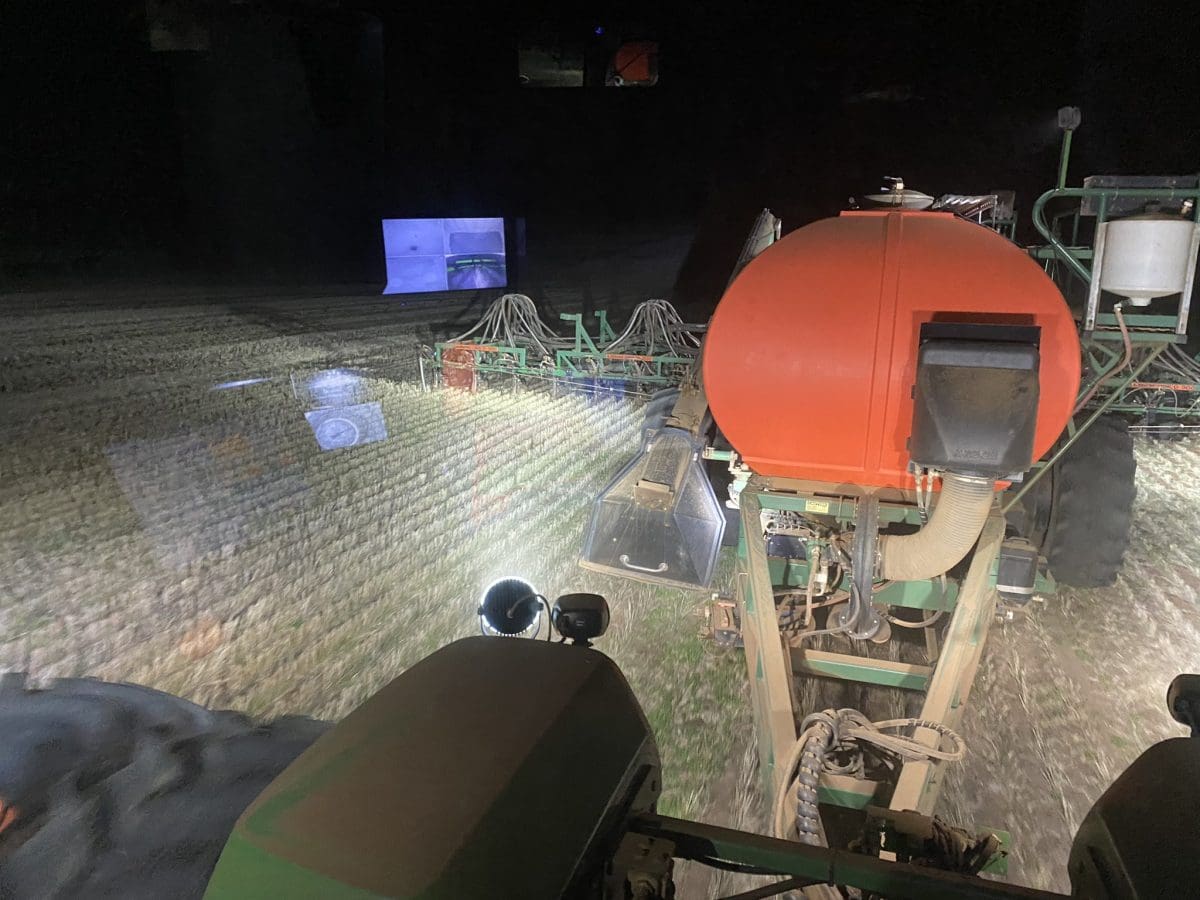
Planting canola at Kulin, WA. Photo: Tim Barndon Jr
AUTUMN has brought smoky days and the rumble of tractors across paddocks as growers around Western Australia have been getting into the annual hustle and bustle of deep ripping, ploughing, spreading lime and spraying.
Those lucky enough to receive solid rainfall have been firing up seeders once again. The recent rainfall across large sections of the WA grainbelt has instigated a flurry of activity and in some areas, particularly in the eastern regions, quite a few hectares of canola have already been sown.
While there have been headaches from supply-chain issues, fertiliser costs, mice plagues, and snails in the south, the recent more positive outlook on prices has seen potential programs stretch to accommodate an increase in canola, wheat and barley area than was originally planned as growers and agronomists drew up their paddock plan over summer.
The end of March and beginning of April saw multiple rain events kick off some areas with a bang, driven by moisture dragged down from north-east systems and multiple low-pressure systems
Patchy rainfall has seen some necks of the woods such as the northern, eastern and great southern regions receive over 100 millimetres of rain in the past few weeks.
Other areas in the west-central Kwinana zone, central and southern parts of the Esperance zone, and the west of the Albany zone have had just a smattering of drops.
Those who have not “pinned back their ears and gone for it” will likely get into seeding in the upcoming weeks.
However, not everyone is rushing into it, as a hot, dry summer for most areas has seen a wait-and-see approach taken by those who do not have the sub-soil moisture or canola seed reserves to cover a false break.
Many of those in the medium and higher-rainfall zones in the central and northern regions who can afford to wait are comfortable to do so, preferring to get a few knockdown sprays on to take the pressure off in-crop applications.
Dedicated canola growers in the higher-rainfall south coastal regions are sowing canola now to utilise excess sub-soil moisture carried over from last year.
Those in the low-rainfall eastern regions that received good rains are also sowing now to capitalise on the opportunity provided by current high canola prices, and the effect it can have on overall farm profit.
This is despite the fact that previous years have shown canola sown late-March to early-April rarely out-yields that sown in mid-April.
At this time of year, climate models are not great at predicting weather events, but the rest of April looks likely to be dry, with lingering La Niña effects causing some uncertainty.
The uncertainty around future rainfall events and a less-than-positive medium-term outlook for rain has tipped the scales for those who had planned to sow canola in the low-rainfall areas.
Most growers in these areas who have enough subsoil moisture to ensure their canola can hang on through a dry April and May, already have, or will have within the next week, a big proportion of their canola in the ground.
Overall, the strong prices for canola, wheat and barley are not likely to have a huge impact for most growers on enterprise mix, other than the near-certain equalling or increase in the record canola area from 2021.
The early rain has ensured canola area will remain up, and there will not be a swing to more pasture, lupins and fallow as was expected to occur in the absence of early rains.
A month ago, it was likely the total crop area would contract back to 8.6-8.7 million hectares (Mha) from 9.2Mha in 2021.
The recent rain and good commodity prices have offset the increase in costs to some extent and, accepting that it is still very early in the season, the total crop area for WA looks likely to be close to that for 2021.
Source: GIWA
Further detail on crop conditions in individual WA port zones can be found on the GIWA website.



HAVE YOUR SAY